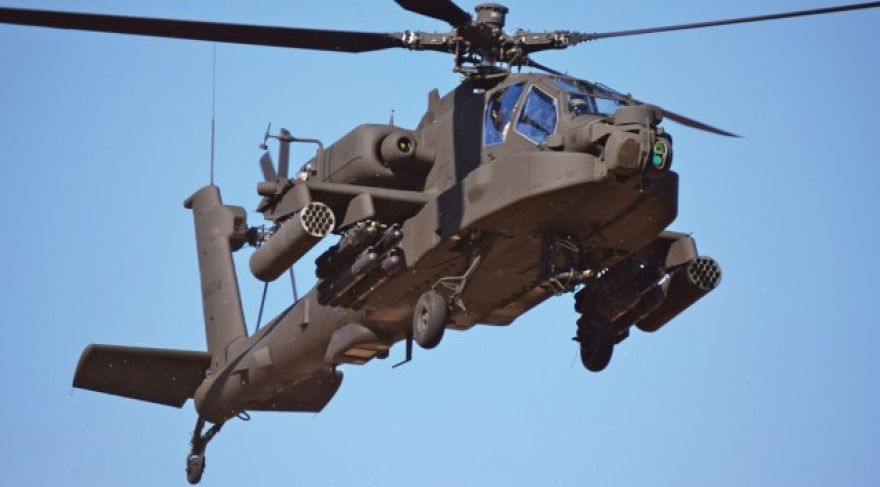
New drone system relays real-time target data to Apache helicopters
The venerable Apache helicopter (it turned 31 last year) has been paired with unmanned reconnaissance drones to improve its strike capabilities, target acquisition, and information gathering roles. The Manned-Unmanned Teaming or MUM-T, allows the Apache’s crew to control the drones remotely, while simultaneously accessing real-time video feeds.
The program has been used in Afghanistan for an undisclosed amount of time, reports. While we’re used to hearing about drones launching attacks on enemy combatants, the AH-64E Apache helicopters still handle the actual combat — their drones are used to gather data, not carry out their own strikes.
According to Apache Program Manager Colonel Jeff Hager, upgrading to the “E” variant of the AH-64 has improved combat capability and increased situational awareness.
At least one of the drones the AH-64E can interact with is the Grey Eagle reconnaissance drone.
“The additional power and capability that the aircraft brings actually changes the face of the battlefield,” Hager said. “Now they can close, maintain and assume contact activities with the enemy at a much faster rate. The enemy could time the amount of time it was going to take the Delta (“D” model Apache) models to get to them. We completely threw that out the window and they (the “E” model Apache crews) can get there much faster,” Hager told Scout Warrior.”
The combination of drone aircraft and choppers makes a great deal of sense, since the small craft can be used to hunt for insurgents, booby traps, or mines without risking a human crew. What will be particularly interesting is if we can ever integrate small drone warfare into supporting reconnaissance roles for fighter jets, ground assault vehicles, or even ordinary infantry. Being able to launch drones that can see enemy positions in infrared or normal light is a capability that could benefit every branch of the armed service.
Exactly how the system functions is still shrouded in secrecy, but even the broad strokes suggest that we’ll see rapid drone adoption by every branch of the military. Historically, operating and maintaining aircraft has been expensive enough to leave the majority of ground-based missions to the Air Force. Drones, however, could be cheap and simple enough to see wide adoption, even if the drones themselves aren’t the high-powered Predator models.